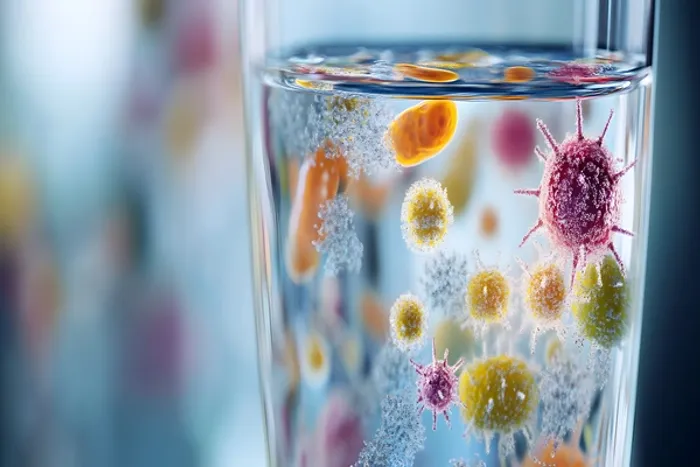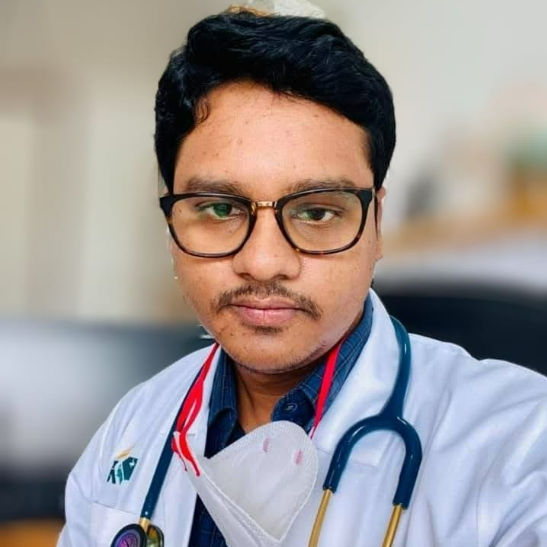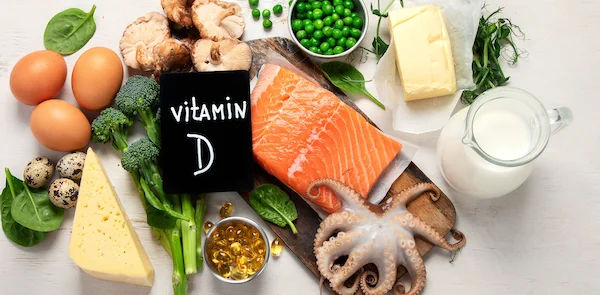Waterborne Diseases: Prevention Guide for Everyone
Know about the waterborne diseases, how prevention helps, contamination, and who is at risk. Essential hygiene habits, vaccination, monitoring water quality and more.

Written by Dr. Dhankecha Mayank Dineshbhai
Reviewed by Dr. M L Ezhilarasan MBBS
Last updated on 27th Oct, 2025

Introduction
Waterborne diseases are illnesses caused by germs in contaminated water. The good news? Most of them are preventable with practical steps you can apply at home, at school, at work, and while travelling. Whether your household relies on municipal supply, a private well, tankers, or bottled options, this guide explains how contamination happens and how to stop it simply and affordably. We’ll demystify treatment methods like boiling, filtration, chlorination, UV, and solar disinfection; show you how to store water safely; clarify when to test your water; and outline hygiene habits that break the chain of infection. You’ll also find targeted advice for families with young children, older adults, and people with weakened immunity, plus checklists for emergencies and travel. We’ll help you decide when to seek medical care. Let’s make safe water and prevention your daily routine because the simplest habits can protect your family from a wide range of diseases.
What are waterborne diseases?
Waterborne diseases are infections caused by consuming or contacting water contaminated with harmful microbes, bacteria (e.g., Vibrio cholerae, Salmonella Typhi), viruses (e.g., norovirus, hepatitis A), and parasites (e.g., Giardia, Cryptosporidium). These germs usually enter water through faecal contamination, especially where sanitation is inadequate or systems fail during floods and sewage leaks. Common symptoms include diarrhoea, vomiting, stomach cramps, fever, and dehydration. Skin and eye infections may occur with contact exposure, and some parasites can cause chronic illness.
While diverse, most waterborne illnesses follow a similar pathway: contaminated water is used for drinking, food preparation, or brushing teeth, or it contacts the mouth via unwashed hands or utensils. A single lapse—like filling a clean container from a dirty tap or dipping a cup into stored water with unwashed hands- can introduce germs. The term “water-related diseases” also includes infections from poor hygiene, unsafe sanitation, and contaminated recreational water, but this guide focuses on preventing illness from drinking and household water use. The key message is simple: block contamination and kill germs before water reaches your mouth. When you pair safe water with good hand hygiene and sanitation, you interrupt the cycle effectively.
Consult a Top General Practitioner for Personalised Advice
Why prevention matters: The global and personal burden
Diarrheal diseases remain a leading cause of illness worldwide, particularly among young children. WHO estimates hundreds of thousands of deaths each year from diarrheal disease attributable to unsafe water, sanitation, and hygiene, with billions exposed to fecally contaminated supplies—underscoring why prevention is essential at household and community levels. Beyond health, the costs are real: missed work and school, expenses for treatment, and the long-term impact of repeated illness on nutrition and growth in children.
At a household level, even one bout of severe diarrhoea can lead to dehydration that requires urgent care. Prevention avoids these emergencies. It also protects people who are more vulnerable to complications, like infants, older adults, pregnant individuals, and those with weakened immune systems. Investing in safe storage containers, basic treatment methods, and consistent handwashing is more cost-effective than paying for IV fluids, antibiotics, or hospitalisation. At a community level, simple measures like maintaining residual chlorine in piped water, fixing leaks quickly, and public education campaigns can drastically reduce disease outbreaks. Prevention is not just an abstract public health agenda; it’s a set of daily habits that protect your family and your neighbours.
How water gets contaminated
Contamination happens when faecal matter from humans or animals reaches water sources, pipes, or containers. Common routes include:
- Faecal contamination and sanitation gaps: Open defecation, poorly maintained latrines, and failing septic systems allow microbes to move into groundwater or surface water. Heavy rains can wash faecal material into wells and taps.
- Infrastructure issues: Leaky water mains, negative pressure during supply interruptions, and cross-connections with sewage lines can draw in contaminants. Even treated water can become unsafe if pipes are compromised.
- Household risks: Clean water can be re-contaminated in the home via dirty containers, dipping cups into stored water, unwashed hands, or poorly maintained filters. Faucet aerators and filter housings can harbour biofilms if not cleaned regularly—an often overlooked source of microbes.
- Floods and sewage backflow: During disasters, floodwaters commonly contain sewage. Wells may be infiltrated, and municipal systems can lose pressure or treatment, triggering boil water advisories.
Who is at higher risk?
- Infants and young children: They dehydrate faster and are more susceptible to severe disease.
- Even short episodes can affect growth and nutrition.
- Pregnant people and older adults: Physiological changes and coexisting conditions increase the risk of complications and hospitalisation.
- Immunocompromised individuals: People with chronic illnesses, on chemotherapy, on immunosuppressive therapy, or with advanced HIV are at higher risk of prolonged or severe infections, including from parasites like Cryptosporidium.
- Travellers: Visiting areas with different water treatment standards or during outbreaks raises risk.
- Traveller’s diarrhoea is common and preventable with careful food and water choices.
For higher-risk households, prioritise reliable treatment (e.g., boiling or certified filters that remove microbes), diligent hand hygiene, and safe storage. When feasible, choose a method that provides multiple barriers (e.g., filtration plus disinfection).
Point-of-use treatment methods
- Boiling: Bring water to a rolling boil for at least 1 minute (3 minutes at high elevations). Let it cool naturally and store it in clean, covered containers. Boiling inactivates most germs, including protozoa like Giardia and Cryptosporidium. It’s highly effective but fuel-intensive.
- Filtration: Options range from ceramic and biosand filters (good for bacteria and some parasites) to ultrafiltration and reverse osmosis (strong barriers to bacteria and viruses). Activated carbon improves taste and reduces some chemicals, but is not a stand-alone microbial barrier. Choose filters certified for microbial reduction; maintain and replace cartridges as recommended.
- Chlorination: Disinfects many bacteria and viruses when dosed correctly and allowed proper contact time, but is less effective against some protozoa. Use approved products and follow label directions; ensure 30 minutes contact time before use. Aim for a faint chlorine smell as a rough check of residual.
- UV and SODIS: UV devices can inactivate microbes if the water is clear (low turbidity). Solar disinfection (SODIS) uses PET bottles exposed to sunlight for several hours; it’s nearly cost-free but requires clear water and adequate sun.
Safe storage and clean handling
- Use containers with narrow mouths, tight lids, and a tap/spigot to avoid dipping. Clean and air-dry containers weekly with soap and safe water.
- Assign a clean ladle if pouring is impossible; never use hands or cups to dip.
- Maintain devices: Clean faucet aerators monthly; sanitise filter housings as per manufacturer.
- These simple steps reduce biofilm buildup—a hidden contamination source.
Hygiene habits that break the chain of infection
Handwashing is a powerful, low-cost defense. Wash hands with soap and safe water for 20 seconds:
- Before preparing food, feeding children, and eating
- After using the toilet, changing diapers, or cleaning up vomit/diarrhoea
- After handling raw foods, trash, or touching animals/pets
- After returning home from public places [5]
Food hygiene matters too:
- Rinse produce with safe water; where uncertain, peel or cook.
- Cook foods thoroughly; keep hot foods hot and cold foods cold.
- Keep raw and cooked foods separate; disinfect cutting boards.
- Use safe water for brushing teeth and making ice.
Sanitation:
- Ensure toilets/latrines are functional and clean. Keep them well-separated from water sources.
- Maintain septic systems and fix leaks promptly. These steps prevent faecal contamination from entering your water supply and reduce disease transmission.
Testing and monitoring water quality
Indicators and what they mean
- Microbial indicators: E. coli or total coliforms suggest faecal contamination and a risk of pathogens. A positive result signals the need for corrective actions (shock chlorination, repairs, or treatment upgrades).
- Turbidity: Cloudiness can shield microbes from disinfection; clearer is better for methods like UV or chlorination.
- Residual chlorine: In piped systems, a small free chlorine residual helps keep water safe throughout the network.
When to test
- Private wells: Test at least annually for bacteria and after floods, heavy rains, or any changes in taste, smell, or appearance.
- Post-repairs: Test after replacing pipes, pumps, or installing new fixtures.
- During illness clusters: If multiple household members experience gastrointestinal illness, consider testing as part of the response.
What to do with the results
- If contamination is detected: Apply immediate point-of-use treatment (e.g., boil), disinfect the system (per local guidance), investigate sources (sanitation, animal access, structural issues), and retest.
- Keep records: Results, actions taken, and dates help track patterns and maintain safety.
Vaccines and medicines that help
Vaccines are an added layer of prevention, especially in outbreaks and for travellers:
- Cholera vaccines (oral) can reduce the risk of cholera in endemic or outbreak settings and for certain travellers.
- Typhoid conjugate vaccines provide longer-lasting protection and are useful in high-risk settings and for travellers.
- Hepatitis A vaccination is recommended in many countries and for travellers to areas with intermediate or high endemicity.
If someone gets sick: Immediate steps
Start oral rehydration solution (ORS) promptly to prevent dehydration. Commercial ORS is ideal. If unavailable, a home recipe is 6 level teaspoons of sugar plus 1/2 level teaspoon of salt dissolved in 1 litre of safe water; offer small sips frequently. Zinc supplements (10–20 mg daily for 10–14 days for children) can shorten the duration of diarrheal episodes. Watch for red flags: lethargy, persistent vomiting, blood in stool, high fever, signs of dehydration (thirst, sunken eyes, reduced urination), or symptoms lasting beyond two weeks. In these cases, consult a doctor online with Apollo24|7 for further evaluation. If symptoms are severe or not improving after initial measures, book a physical visit to a doctor with Apollo 24|7.
Testing can help identify causes during prolonged or severe illness—stool culture/antigen tests for pathogens, or liver tests if hepatitis is suspected. Apollo24|7 offers convenient home collection for tests such as stool examination or basic blood panels, where available, which reduces exposure and saves time.
Prevention at school and work
Infrastructure and supplies
- Ensure safe dispensers with taps and covered storage; avoid dipping cups.
- Maintain handwashing stations stocked with soap and safe water at entrances, cafeterias, and toilets.
- For large facilities, verify residual chlorine levels at points of use and maintain filters on schedule.
Daily routines
Assign a staff member to check supplies twice daily.
- Clean high-touch surfaces regularly; disinfect spills of vomit/diarrhea promptly and safely.
- Post simple signage on handwashing steps and “safe water rules” (e.g., no dipping).
After floods, storms, and disasters
Expect contamination during and after disasters. Follow local boil water advisories; if none are issued but water is suspect, treat it:
- Boil for at least 1 minute (3 minutes at high altitude).
- If boiling isn’t possible, use approved disinfectants as directed or bottled water. Cloudy water
- should be filtered/settled before disinfection.
- Clean and disinfect wells per local guidance; test before resuming use.
Community actions and policy
Community-wide prevention depends on WASH—Water, Sanitation, and Hygiene:
- Protect source water; maintain treatment plants; ensure adequate disinfection with residual chlorine at network endpoints.
- Invest in safely managed sanitation to prevent faecal contamination of water sources.
- Monitor systems, fix leaks rapidly, and establish early-warning and communication protocols for boil advisories.
Urban and rural challenges differ; urban systems face ageing infrastructure and pressure changes; rural areas may rely on wells or tanker deliveries. Community education campaigns, school WASH programs, and support for affordable household treatment can bridge gaps. Climate change intensifies risks through floods and droughts; resilience planning must include WASH upgrades and emergency water safety plans.
Myths vs facts about water and disease
- Myth: Clear water is safe. Fact: Many dangerous microbes are invisible; testing and treatment matter.
- Myth: A carbon filter alone removes germs. Fact: Carbon improves taste but is not a microbial barrier unless combined with certified microbial filtration.
- Myth: Boiling ruins water. Fact: Boiling is one of the most effective and accessible methods to kill germs.
- Myth: Bottled equals safe. Fact: Bottled water quality varies by brand and handling; still, follow safe storage and purchase from reputable sources.
Conclusion
Preventing waterborne diseases starts with simple, repeatable routines: treat water using a method that fits your household, store it safely, and pair it with strong handwashing and food hygiene. These everyday actions break the chain of infection and protect the most vulnerable children, older adults, pregnant individuals, and those with weakened immunity. When disaster strikes or systems fail, switch to emergency guidance immediately: boil if you can, disinfect correctly if you can’t, and rely on safe bottled water when available. Test private wells regularly and after floods to ensure your water is truly safe. If someone becomes ill, act early with ORS and zinc, and seek medical care if symptoms are severe, persistent, or accompanied by red flags. If your condition does not improve after trying these methods, book a physical visit to a doctor with Apollo24|7; they can also arrange convenient home collection for relevant tests where available. Safe water is the foundation of good health, and prevention is the most dependable, affordable strategy to achieve it. Start today with one simple step: clean your storage container and set a reminder to keep it that way—and build from there.
Consult a Top General Practitioner for Personalised Advice
Consult a Top General Practitioner for Personalised Advice

Dr. Vivek D
General Physician
4 Years • MBBS
Bengaluru
PRESTIGE SHANTHINIKETAN - SOCIETY CLINIC, Bengaluru

Dr. Anand Ravi
General Physician
2 Years • MBBS
Bengaluru
PRESTIGE SHANTHINIKETAN - SOCIETY CLINIC, Bengaluru

Dr Syed Mateen Pasha
General Physician
2 Years • MBBS
Bengaluru
PRESTIGE SHANTHINIKETAN - SOCIETY CLINIC, Bengaluru

Dr. D Bhanu Prakash
General Practitioner
10 Years • MBBS, AFIH, Advanced certificate in critical care medicine, Fellowship in critical care medicine
Hyderabad
Apollo 24|7 Clinic, Hyderabad
Dr. Karanam Kondalamma
General Practitioner
4 Years • MBBS
Hyderabad
KK Clinic, Hyderabad
Consult a Top General Practitioner for Personalised Advice

Dr. Vivek D
General Physician
4 Years • MBBS
Bengaluru
PRESTIGE SHANTHINIKETAN - SOCIETY CLINIC, Bengaluru

Dr. Anand Ravi
General Physician
2 Years • MBBS
Bengaluru
PRESTIGE SHANTHINIKETAN - SOCIETY CLINIC, Bengaluru

Dr Syed Mateen Pasha
General Physician
2 Years • MBBS
Bengaluru
PRESTIGE SHANTHINIKETAN - SOCIETY CLINIC, Bengaluru

Dr. D Bhanu Prakash
General Practitioner
10 Years • MBBS, AFIH, Advanced certificate in critical care medicine, Fellowship in critical care medicine
Hyderabad
Apollo 24|7 Clinic, Hyderabad
Dr. Karanam Kondalamma
General Practitioner
4 Years • MBBS
Hyderabad
KK Clinic, Hyderabad
More articles from General Medical Consultation
Frequently Asked Questions
What’s the best way to prevent waterborne diseases at home?
Use a reliable treatment (boiling, certified filtration, UV, or chlorination), store water in covered containers with a tap, and practice consistent handwashing. This household water treatment and safe storage combo is highly effective.
How long should I boil water during a boil water advisory?
Bring water to a rolling boil for at least 1 minute (3 minutes at high altitude). Let it cool naturally, keep it covered, and store it in clean containers.
Do activated carbon filters remove germs?
Not by themselves. Carbon improves taste and odour but is not a microbial barrier. Choose filters certified for bacteria and viruses, or pair carbon with a microbial filter or disinfection. Search for the best water filter for bacteria and viruses that fits your needs.
How often should I test my private well?
At least annually for bacteria and after floods, heavy rains, or changes in taste or odour. If tests detect contamination, follow local guidance for shock chlorination and retesting.
What’s the ORS recipe at home if packets aren’t available?
Mix 6 level teaspoons of sugar plus 1/2 level teaspoon of salt in 1 litre of safe water. Offer small sips frequently. Seek medical care if there are dehydration signs or symptoms that persist.




